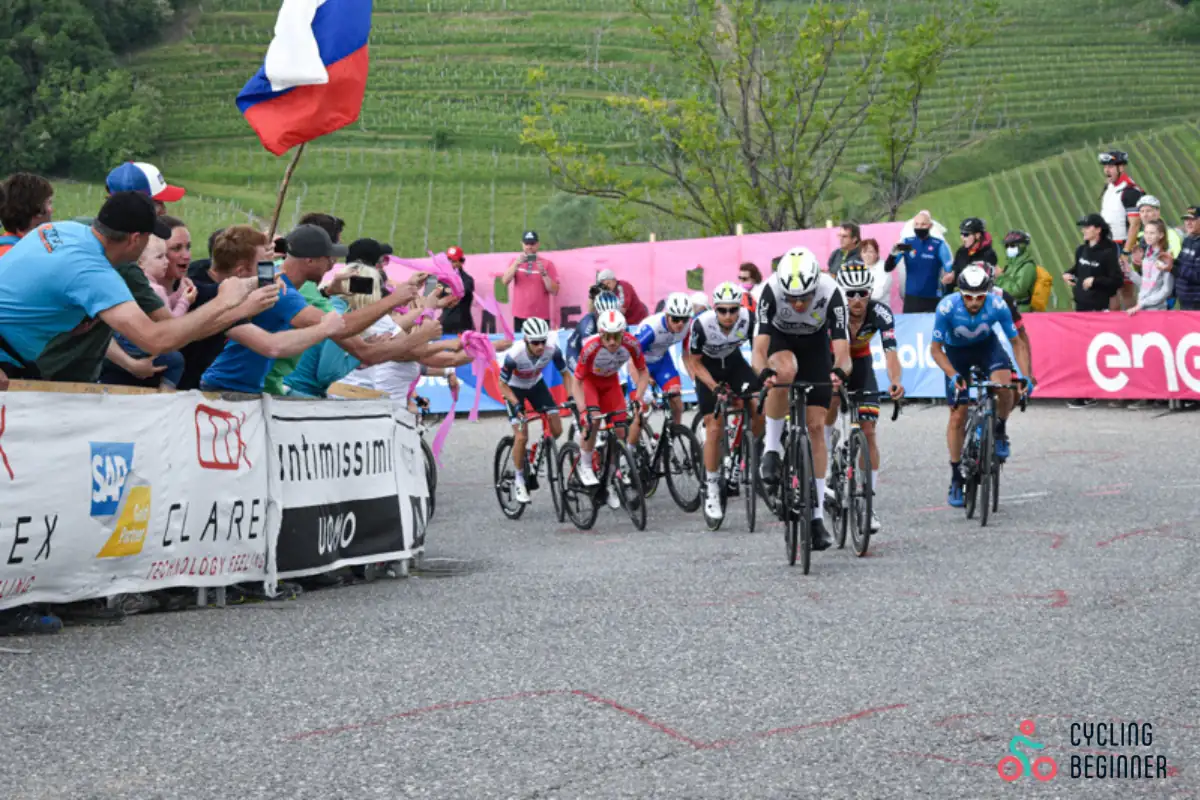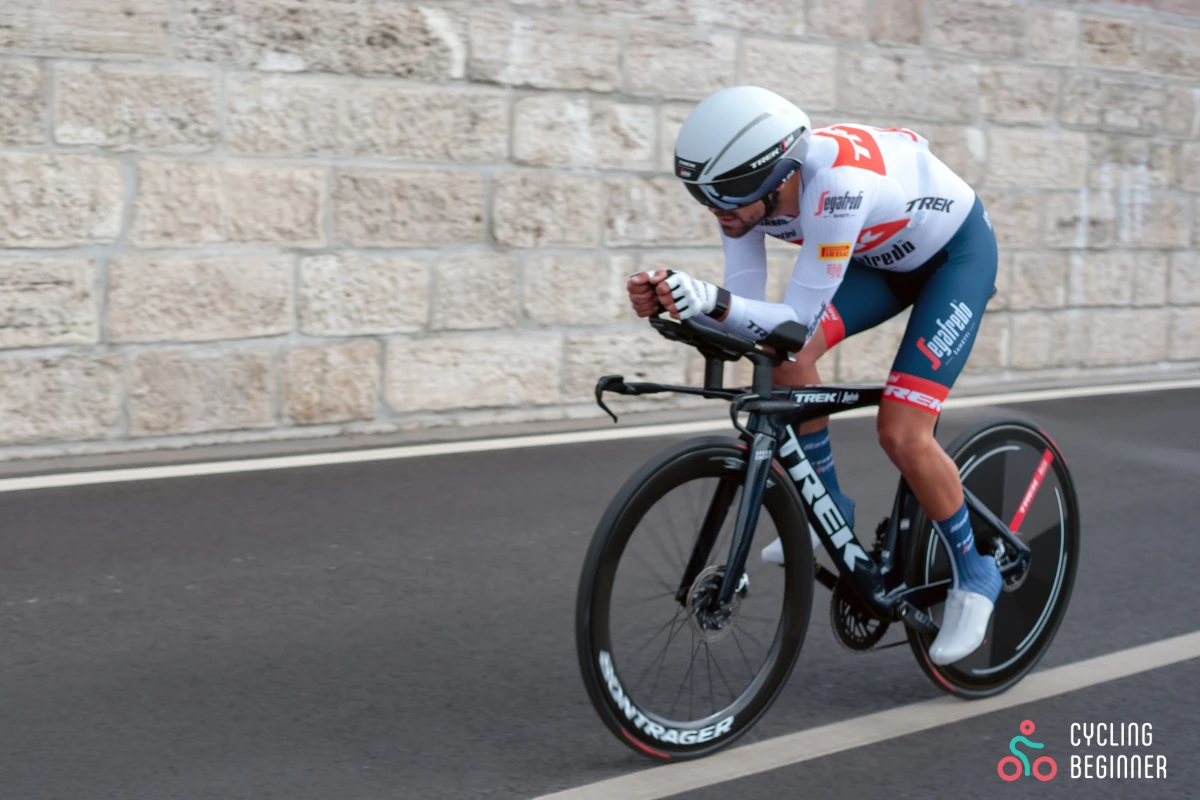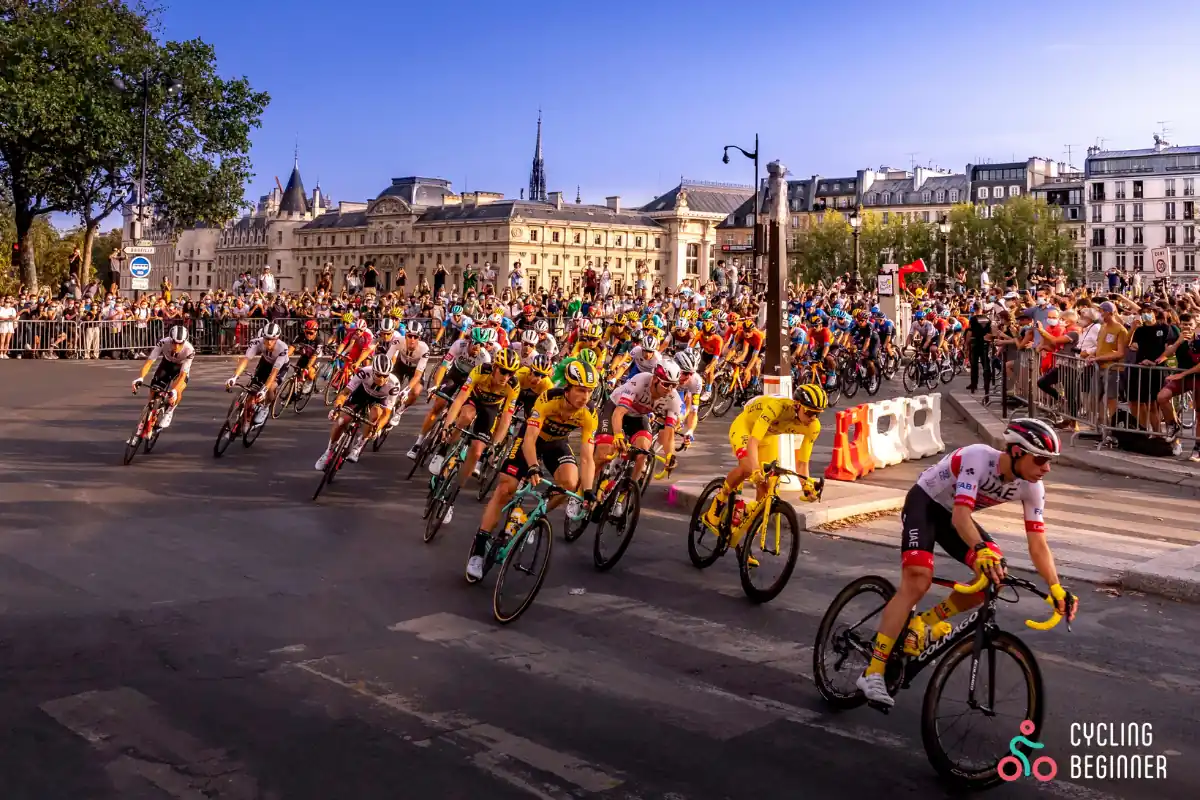I once stood by the side of the road and watched a race. The main group came by, and it was only when one of the spectators had his umbrella pulled out of his hands by the cyclists’ wind that I understood how fast the professionals were riding.
There was a time in my life when I thought I could match professionals’ speed. Maybe not the best of them, but at least some from the lower ranks. As I grew up, I realized that those were just dreams.
Professional cyclists are genetic freaks who train for hours and hours to maintain and improve their fitness. We mere mortals can only watch and admire them.
It’s tough when you realize that even sprinters can easily drop you on the climb
The speeds professionals reach are extremely high but differ greatly based on the terrain. It’s only logical that they are slower when they ride uphill and much faster when they descend.
I checked the average speeds cyclists reach on different terrains and disciplines. I analyzed a bunch of races from 2020 onwards and got the results presented below.
Speeds based on terrain

Average Speed on Flat: 43.78 km/h (27.2 mi/h)
Most of the races take place on the flat. It’s the ‘neutral’ ground where cyclists mostly wait for the crucial parts of the race.
Although the race is really decided on flat, the pace there is always very high. Teams need to control the advantage of the breakaways and, at the same time, prevent any attacks. This is easiest done by maintaining a high pace.
The cycling speed on the flat is usually between 40 and 45 km/h (25-28 mi/h) but can go up to 60 km/h (37 mi/h) at the end of the stages. But the average speed on the flat is 43.78 km/h (27.2 mph).
Average Speed on Climbs: 20.66 km/h (12.83 mi/h)
Climbs are the terrain where stages and, more importantly, races are decided. If you can ride fast uphill, you will be a winner.
The best cyclists in the world are the best climbers. They explode on climbs and reach ascending speeds not imaginable to an average amateur.
Obviously, the speed varies based on the gradient, with a higher gradient leading to lower speeds. For instance, the speed on the 20 hardest climbs in the world would be pretty low. But whatever the gradient, the speeds are still admirable compared to amateurs.
Professional cyclists ride around 25 km/h on the flatter climbs, but this can drop to 15 km/h on the steepest climbs. On average, their climbing speed is 20.66 km/h (12.83 mi/h).
Average Speed on Descends: 67.38 km/h (41.87 mi/h)
The descends are great. I absolutely love watching pros descend like madmen and trying to gain time on the way to the bottom of the hill.
Descends are part of the race where you can gain much time if you know how to descend properly. And if you dare to do it.
However, descends are also where cyclists’ abilities vary the most. Some riders lean their bike through the corners and almost brush the ground with their knee, while others ride downhill almost like amateurs.
Based on cyclist skills and road gradient, descending speed varies a lot. The most daring cyclists reach a top speed of around 105 km/h (65 mi/h), but the average descending speed is 67.38 km/h (41.87 mi/h).
Speed based on discipline

Average Speed in Sprints: 63.83 km/h (39.66 mi/h)
Sprinters are recognized as the fastest men in the cycling caravan. They are the biggest, the strongest and are therefore able to produce the highest absolute power. And that translates to the highest speed.
However, sprinters can sustain high power only for a couple of seconds, that’s why sprints always start a few hundred meters before the finish and last around 15 seconds.
The average speed of the analyzed sprints was 63.83 km/h (39.66 mi/h). But those were only sprints on a flat road. If you analyze sprints with a small rise in the last meters, the speed is lower and the type of riders who win changes.
Average Top Speed in Sprints: 70.9 km/h (44.05 mi/h)
Perhaps the average top sprint speed is more interesting than the average sprint speed.
Sprinters usually reach the top speed a few seconds after they start sprinting and then try to maintain high speed as long as possible.
But towards the end of the sprint, the speed starts to drop as the muscles become tired and can no longer produce the power they did at the start of the sprint.
The average top speed in sprints is 70.9 km/h (44.05 mi/h), but I have seen some sprint data, where the speed reaches around 80 km/h (49 mi/h). However, such sprints are rare.
Average Speed in Time Trial: 52.51 km/h (32.62 mi/h)
The time trial is a special discipline that requires a specific set of abilities. The best time trialists are powerful guys who can maintain high power for a long period of time. They must also be aerodynamic to make the most efficient use of the power generated.
There are many different time trials through the season, some of which occur on climbs. Those are not true time trials, as they combine time trial and climbing abilities. That’s why I didn’t include them in my analysis.
So, when we look only at the data from the flat time trials, the average speed is 52.51 km/h (32.62 mi/h). Most of the time trials are between 20 and 40 kilometers long (12-25 mi), so riders must maintain such a high speed for 30-45 minutes.
There is one exemption, however. On prologues, the average speed can be slightly higher as the route is so much shorter.
Speed based on race length

Average Speed on One-Day Races: 42.38 km/h (26.33 mi/h)
Many cyclist enthusiasts will tell you that one-day races are the most fun to watch. It’s guaranteed to be an explosive race, with attacks often starting well before the finish line.
The terrain varies from race to race, but one-day races usually don’t have longer climbs. They are made hard by a number of short climbs, cobbles or extreme lengths.
When you have an attacking race with short climbs, you can be certain the speed will be high. And it really is!
One-day races have the highest average speed of all types of races. Cyclists don’t have to save the energy for next few days, so they go all out. That translates to an average speed of 42.38 km/h (26.33 (mi/h), which is often achieved in races that last six or more hours.
Average Speed on One-Week Stage Races: 41.29 km/h (25.66 mi/h)
One-week stage races have a certain level of tactic involved, that you don’t see in one-day stage races. Even though they are not that long, main riders will still save energy on some days in order to be as good as possible on key stages.
Stage races usually consist of different types of stages. Some are flat, others hilly and at least one takes place in mountains. Some even have time trials, but these are not common or mandatory in every race.
Different type of stages and some tactical games between main favorites leads to lower average speed. This is 41.29 km/h (25.66 mi/h) over the whole race but can vary slightly depending on the race profile.
Average Speed on Grand Tours: 40.08 km/h (24.90 mi/h)
Each year there are three 3-week long races – Giro d’Italia, Tour de France and La Vuelta a España.
The Grand Tours are the holy grails of cycling. Every rider dreams of winning the Tour de France and riding into Paris in the yellow jersey, but the reality is only a few can.
Grand Tours consist of 21 stages with only 2 rest days in between. Therefore it’s important to save as much energy as you can for the hardest stages, where the race is decided.
The peloton (main group on the road) will take it easy some days, leaving the stage win to breakaway. Even though they ride fast in order to take the win, the speed is usually lower than it would be if the main favorites would race full-on.
The average speed on the Grand Tour has been slowly increasing over the years but is still the lowest of all races. In recent years, cyclists have been riding at an average speed of 40.08 km/h (24.90 mi/h).

